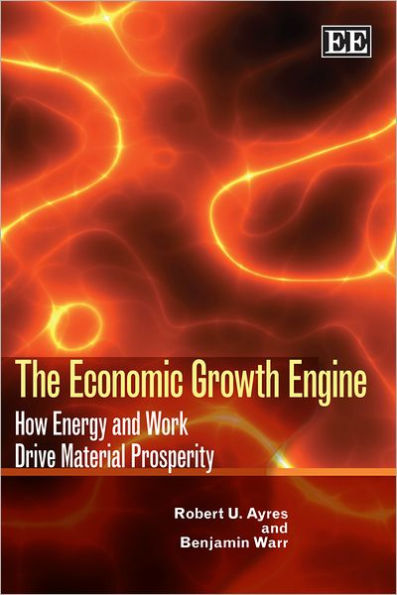The authors take a realistic approach to explaining the relationship between technological progress, thermodynamic efficiency and economic growth. Their findings are a step toward the integration of neo-classical and evolutionary perspectives on endogenous economic growth, concluding in a fundamental explanation of endogenous growth that is both quantifiable and consistent with the laws of thermodynamics. For two centuries fossil and other sources of energy (work) have been replacing human and animal muscles. Now our civilization is truly addicted to fossil energy availability at ever low prices. Can increasing efficiency compensate for coming scarcity? This is the crucial question. The most important implication of this is that future economic growth is not guaranteed because the efficiency gains that have driven growth in the past may not continue in the future.
Exploring the theory of growth with an emphasis on the role of energy, useful work and technological change, this book will be of great interest to academics and students focussing on growth theory, energy and ecological economics. It will also prove insightful to those concerned with policy making or responding to changes in policy related to the energy-growth nexus.
The authors take a realistic approach to explaining the relationship between technological progress, thermodynamic efficiency and economic growth. Their findings are a step toward the integration of neo-classical and evolutionary perspectives on endogenous economic growth, concluding in a fundamental explanation of endogenous growth that is both quantifiable and consistent with the laws of thermodynamics. For two centuries fossil and other sources of energy (work) have been replacing human and animal muscles. Now our civilization is truly addicted to fossil energy availability at ever low prices. Can increasing efficiency compensate for coming scarcity? This is the crucial question. The most important implication of this is that future economic growth is not guaranteed because the efficiency gains that have driven growth in the past may not continue in the future.
Exploring the theory of growth with an emphasis on the role of energy, useful work and technological change, this book will be of great interest to academics and students focussing on growth theory, energy and ecological economics. It will also prove insightful to those concerned with policy making or responding to changes in policy related to the energy-growth nexus.

The Economic Growth Engine: How Energy and Work Drive Material Prosperity
448
The Economic Growth Engine: How Energy and Work Drive Material Prosperity
448Hardcover(New Edition)

Product Details
| ISBN-13: | 9781848441828 |
|---|---|
| Publisher: | Edward Elgar Publishing |
| Publication date: | 04/27/2009 |
| Edition description: | New Edition |
| Pages: | 448 |
| Product dimensions: | 6.40(w) x 9.30(h) x 1.40(d) |
